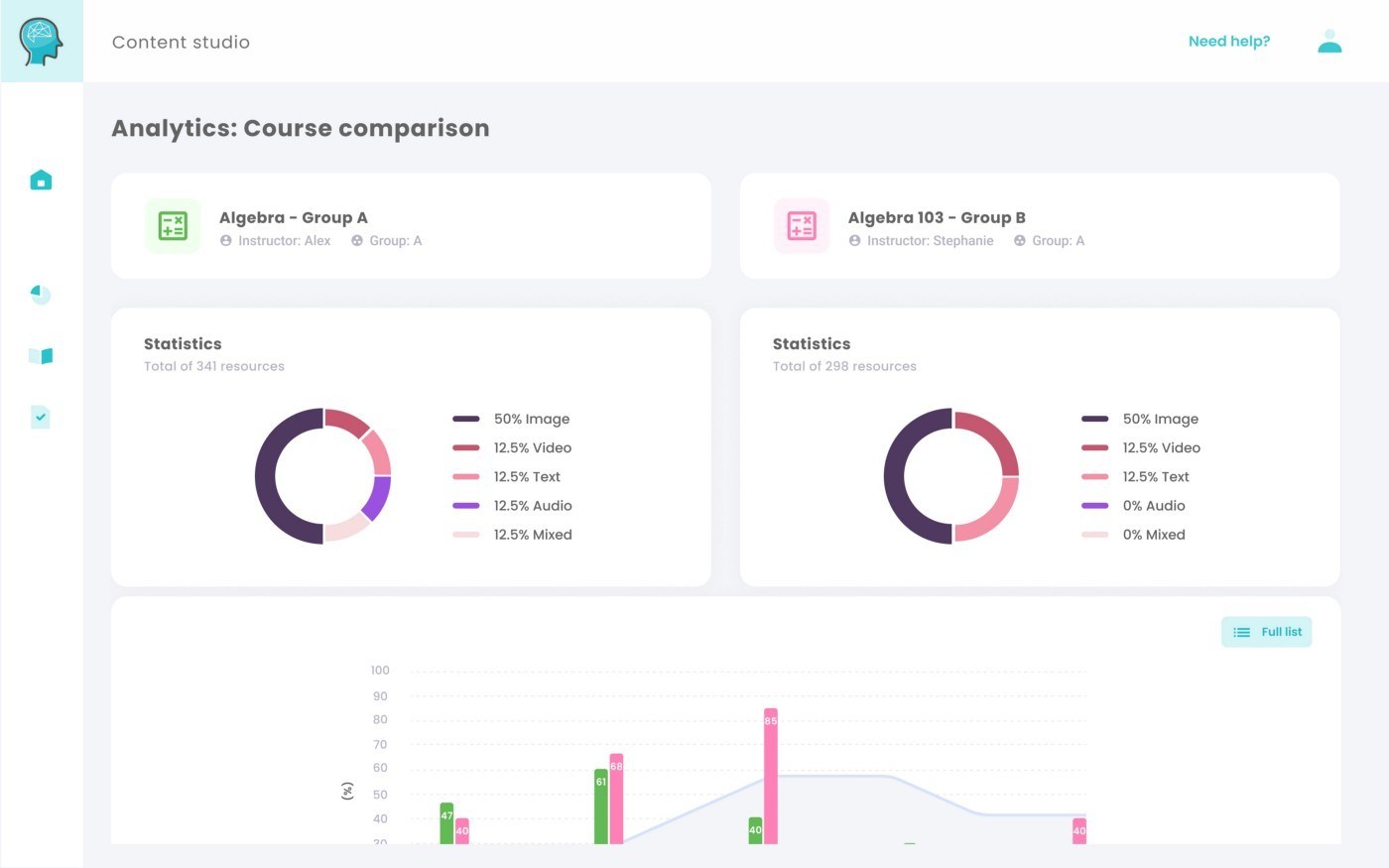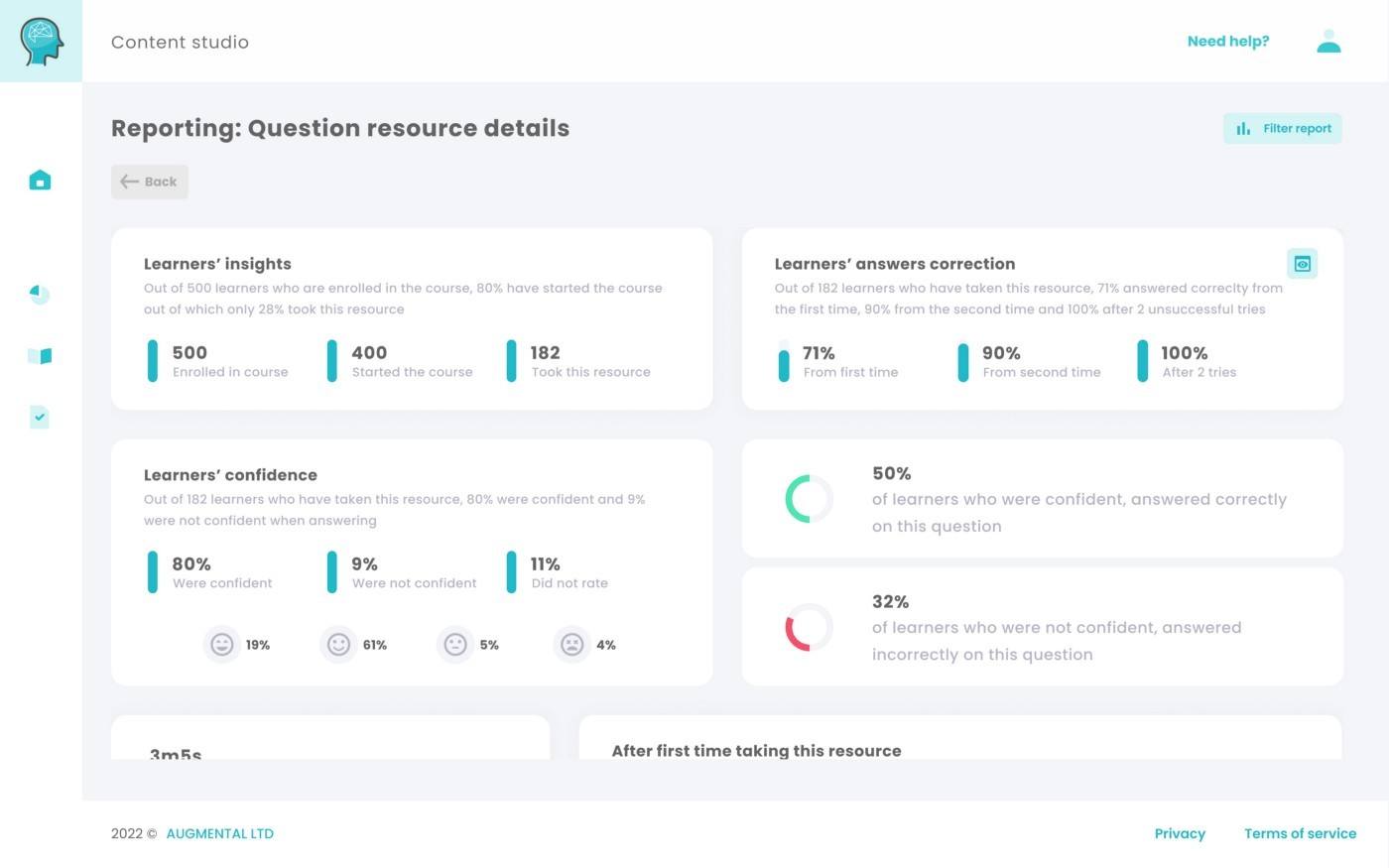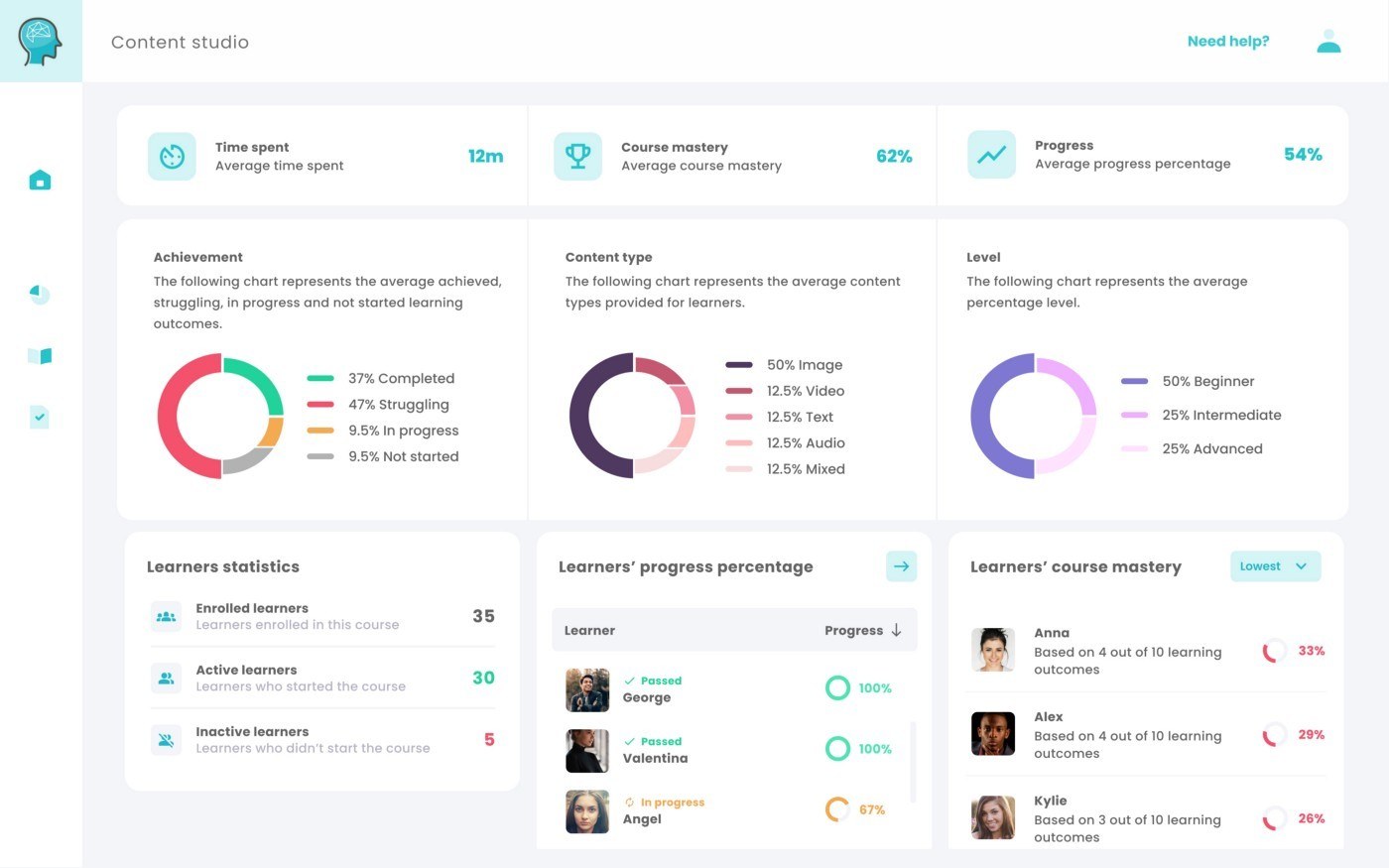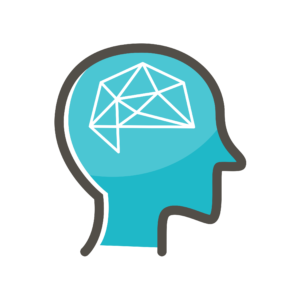The Influence Of Analytics On Learning
The influence of analytics on learning is significant by providing a wealth of data that can be used to improve courses, measure success, and provide feedback to learners.
Data analytics is also influencing learning by providing instructors with feedback on how learners are performing in their groups and what could be done better to improve learner outcomes. This information is then used by instructors to provide more effective instruction and better prepare learners for future challenges.
But have you considered using data analytics for your courses? Data analytics can be very useful in helping you make decisions about your courses and improve your learners’ learning experience. In this article, we’ll discuss what data analytics is, why it’s important for eLearning professionals, and how it might benefit your business or institution.
Use Of Data Is Key
The use of data is the key advantage that eLearning has over traditional education. Data analytics enables you to collect and analyze learners’ performance information, which can help you understand what is working and what isn’t. It also allows you to improve your lessons by identifying gaps between what learners know about a topic before they take a course versus after taking the course—a process called “post-course learning.” Finally, data analytics provides insights into how your learners are using their courses: do they show up on time? Are they completing activities within the allotted time period? Or do they need some extra coaching before being ready for certification exams?
Data analytics is the use of data to collect, analyze, and model information. It is a powerful tool that can help you understand your learners, as well as their performance in your course. The use of data analytics is growing rapidly in eLearning because it offers benefits such as:
- Helping you improve courses by understanding what works and what doesn’t
- Understanding how learners are using your courses so that you can make changes based on their feedback
How Can Learning Reporting And Analytics Benefit You?
Learning analytics can help you improve your lessons and understand the effectiveness of your learners and their learning environment. It’s all about data and insights.
They provide you access to macro-level data, including single institution insights, cross-institutional data comparison, and lesson-vs-lesson detailed reporting. In addition to that, you can visualize the number of users who reach a certain lesson, how long they spend on it, and their performance after completing it.
Learning analytics also provide micro-level information about each learner’s engagement and behavior with your content: for example, which content was watched most frequently by learners or what content they viewed more than once during a session, what percentage of them completed the lesson all the way through, how many times they switch between resources in your lesson, etc.
One of the key benefits is that it gives you access to historical data which helps you take action at the right time. This data gives you valuable insight into what works well in your learning environment and tells you when something needs attention!
Benefits Of Learning Analytics
The benefits of using learning analytics are numerous:
1. Generate Real-Time Reports
Learning analytics allow you to take actions based on real-time data collected from users’ interactions with their lessons—such as when someone faces an issue in a specific resource and needs intervention, when someone completes an assignment on time or misses one due to technical difficulties—that may not have been possible before learning analytics became available as part of eLearning platforms.
2. Access Macro- And Micro-Level Analytics
The power of data helps us learn, grow, and improve. Augmental gives you access to your data on a single institutional level, but also provides the ability to drill down into what’s happening at a micro level within a course.
Cross-institutional reporting is a way of tracking the results of activity across multiple institutions. For example, if you are providing a course, you might want to compare the number of participants who were successful in the course at each institution. This would allow you to see how effective your course is in different locations.
Micro-level reporting is similar but more granular than that—it focuses on individual learners instead of whole groups. It helps institutions track progress over time by identifying which learners are performing better and why.

3. Access Lessons And Users’ Historical Data
User-generated lesson insights can help you track the historical data of your learners, as well as their engagement with your lesson. Access lesson insights, which will give you an overview of how your learners have been engaging with your lessons—including the lessons that they completed, the ones they didn’t complete, and the ones that were incomplete but still active.
Resource-level generated insights can help you determine how much time and effort has been put into your lessons and how effective those resources were in helping drive engagement.
4. Track Users’ Engagement And Performance With Your Content
Another metric we look at is whether or not users can answer all questions correctly. We also track how many questions they skip before answering one correctly and how many questions they skip before answering one incorrectly. This information can be used to determine what makes a good User Experience.
The data can also help you understand how your learners interact with content. For example:
- If a user fails at an exercise, you can use analytics to see what went wrong and then modify your lesson to make it more effective.
- Track the total time spent on a resource versus the original allocated time.
- Only 50% of the users who watched this video answered correctly the following questions.
- 85% of learners who were confident about their answers answered correctly on this question.
- 30% of learners clicked to preview the content before answering this question.

5. Take Action At The Right Time To Boost Your Users’ Effectiveness And Reduce Costs
Content has a huge impact on the success of your institution. The first step is to understand the effectiveness of your content. Learning analytics provide you with a detailed analysis of how people interact with the resources, including who they are, what they do, and how long they stay engaged with the content. This information helps you improve course design by identifying areas for improvement as well as providing insights into which types of learners are most effective at mastering specific topics or concepts in a course.
Whether you are trying to find the right answers or just want an easy way to find what you need, our platform will provide them with exactly what you want.

Conclusion
It’s clear that data analytics has a profound impact on the world of learning and delivering knowledge. It will play an even bigger role in the future as more people are expected to access online platforms which require real-time feedback from users. Using data to improve teaching and the quality of your lessons can make all the difference for learners by providing better and personalized information at the right time.

